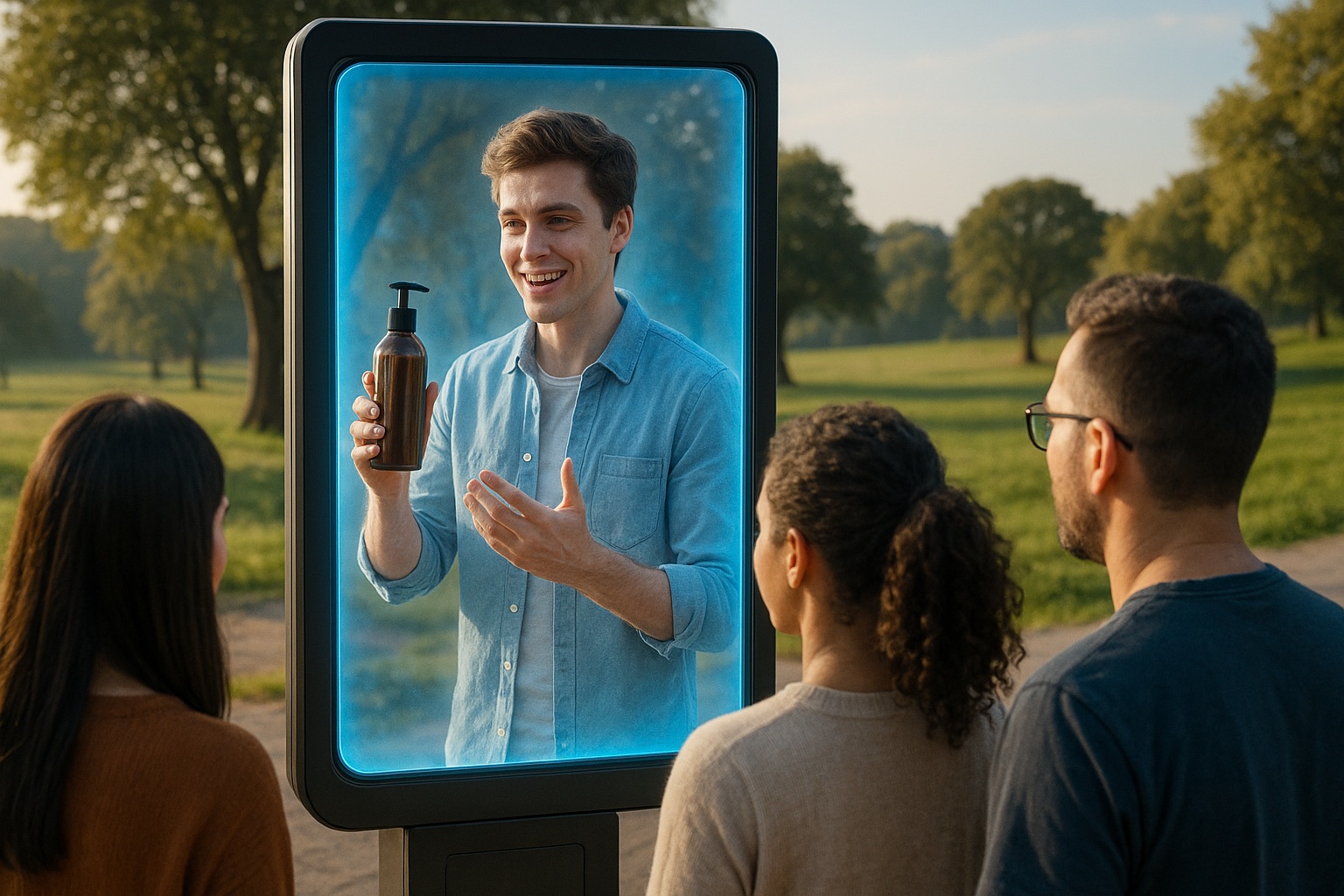In a world defined by speed, uncertainty, and data overload, businesses across industries are under pressure to stay ahead of market trends. Traditional forecasting methods, often reliant on historical data and static models, are no longer sufficient in today’s dynamic environment. Enter AI-powered digital twins—virtual, intelligent replicas of physical systems or processes that provide real-time insights, simulate future scenarios, and enable predictive capabilities at scale.
AI-powered digital twins are emerging as powerful tools for organisations seeking to predict market trends with greater accuracy, respond to disruptions proactively, and continuously optimise their operations. They combine real-time data integration, machine learning, generative AI, and scenario modelling to deliver insights that were previously impossible to achieve.
This blog offers an in-depth exploration of how AI-powered digital twins are revolutionising market trend prediction, breaking down their mechanisms, applications, benefits, and future impact.
Table of Contents
Understanding AI-Powered Digital Twins
An AI-powered digital twin is not just a static 3D model of a product or process. It is a dynamic, data-driven learning system that reflects the current state of its real-world counterpart. It does this by constantly collecting and analysing data from connected sources, including IoT sensors, business applications, and external datasets.
These twins evolve over time, learning from new inputs, anomalies, and feedback, and in doing so, they offer increasingly accurate and actionable predictions. AI, particularly machine learning (ML) and generative AI, plays a central role in making digital twins predictive, adaptive, and intelligent.
How Digital Twins Predict Market Trends: Step-by-Step Process
1. Data Integration and Model Creation
At the core of every digital twin lies data integration. To effectively predict market trends, digital twins must aggregate data from multiple sources, including:
- IoT sensors and smart devices
- Supply chain databases
- Real-time sales and inventory systems
- Consumer sentiment data from social media
- External factors such as weather reports, economic indicators, or competitor activity
For example, a retail company might combine in-store sales data, online traffic, social media trends, and weather forecasts into one digital twin. With this rich dataset, AI can build a continuously evolving model of market behaviour.
Furthermore, generative AI streamlines the model development process. Where previously model creation could take months, generative AI allows data scientists to build and iterate complex digital twin models in a matter of weeks. Large Language Models (LLMs) like GPT-4 can even generate the code required to automate the creation and refinement of these twins.
2. Scenario Simulation and “What-If” Analysis
With the twin created, the next phase is scenario simulation, which uses generative AI to explore “what-if” questions. These are critical for predicting future outcomes and testing potential decisions. For example:
- What if there is a 20% increase in raw material prices?
- What happens if a key supplier is disrupted due to geopolitical tensions?
- How will customers react to a 10% price drop next quarter?
These simulations are not random guesses. They’re bounded by constraint-based reasoning—the AI ensures outputs remain within real-world limitations, such as machine capacity, workforce availability, budget caps, or logistical time frames. By doing so, digital twins provide feasible predictions that decision-makers can trust.
3. Predictive Analytics and Pattern Recognition
Predictive analytics is where digital twins truly shine. They analyse trends not only from current data but also from historical patterns. Machine learning models are trained using years of past data to detect signals and anomalies that precede market changes. For example:
- Anomaly detection models flag unusual drops or surges in customer demand.
- Time-series forecasting models predict future sales based on seasonality and external triggers.
- Graph Neural Networks (GNNs) are used to model and analyse the interconnectedness of variables like demand, pricing, supply chain disruptions, and social trends.
By uncovering hidden correlations, digital twins enable businesses to identify trends early and respond more quickly than their competitors.
Applications of AI-Powered Digital Twins in Market Trend Prediction
The versatility of AI-powered digital twins allows them to be used across a wide range of industries. Below are key use cases demonstrating their predictive power:
A. Manufacturing and Industrial Operations
Use Cases:
- Simulate production workflows to find bottlenecks before they occur.
- Predict machinery failures using sensor data, leading to predictive maintenance and reducing downtime.
- Model impacts of raw material price fluctuations on overall costs.
Example: A manufacturing firm facing frequent machine failures implemented digital twins to simulate various maintenance schedules. The result was a 25% reduction in unplanned downtime and better alignment between production and market demand.
B. Retail and E-Commerce
Use Cases:
- Model customer behaviour based on website interaction, past purchases, and social sentiment.
- Forecast demand surges (e.g., during Black Friday or a viral TikTok trend).
- Simulate inventory strategies to reduce waste and prevent overstocking.
Example: A global retailer used digital twins to predict product demand during the holiday season. By modelling customer sentiment and weather data, they increased inventory accuracy by 30% and significantly reduced unsold goods.
C. Urban Planning and Smart Cities
Use Cases:
- Simulate traffic flow changes in response to events, construction projects, or policy decisions.
- Predict energy consumption patterns in buildings to optimise smart grid usage.
- Evaluate the environmental impact of infrastructure developments using generative AI.
Example: A city planning authority created a digital twin of its downtown district to simulate the impact of a new bike lane network. The twin helped optimise placement, improving commuter satisfaction and reducing congestion.
D. Healthcare and Pharmaceuticals
Use Cases:
- Simulate individual patient responses to treatment plans or medication dosages.
- Predict outbreak trends or hospital resource needs during public health emergencies.
- Optimise clinical trial design by modelling disease progression in digital patients.
Example: During a flu season, a hospital system used patient digital twins to simulate likely admissions and ventilator usage. This enabled more effective resource planning and reduced patient wait times.
E. Supply Chain and Logistics
Use Cases:
- Anticipate potential delays due to geopolitical events or weather disruptions.
- Optimise delivery routes and inventory placement.
- Simulate cost impacts of fuel price fluctuations or regulatory changes.
Example: A logistics firm used AI-powered twins to simulate disruptions in global shipping routes. They proactively rerouted goods, saving millions in potential late fees and maintaining customer satisfaction.
F. Financial Services and Banking
Use Cases:
- Model financial market reactions to changes in interest rates, inflation, or policy.
- Simulate lending scenarios to assess credit risk.
- Predict shifts in investment patterns based on consumer sentiment and economic data.
Example: A fintech company created a digital twin of a borrower profile and simulated hundreds of lending scenarios. This enabled faster approvals while reducing defaults.
Emerging Capabilities and Technology Trends
Digital twins are evolving rapidly, and several trends are pushing their predictive capabilities even further:
1. Cognitive Digital Twins (CDTs)
These are advanced twins that use reinforcement learning to improve over time. They not only analyse and simulate but also learn from outcomes, refining their logic automatically.
2. Human Digital Avatars
Some companies now use AI-powered digital avatars to replicate human behaviour in training, customer service, and simulations. This helps model how customers or employees might react under specific conditions.
3. Twin-as-a-Service (TaaS)
To make this technology more accessible, many vendors offer cloud-based digital twins. These platforms enable businesses, particularly SMEs, to build and deploy twins without incurring significant IT investment.
4. Blockchain Integration
Blockchain is being utilised to ensure the integrity of simulation data, particularly in highly regulated industries such as healthcare and finance. This ensures digital twins operate on tamper-proof, verifiable data.
Visualisation, Decision Support, and Real-Time Feedback
As data becomes more complex and predictions more nuanced, the ability to visualise trends and interact with simulations becomes increasingly important. AI-powered digital twins bring insights to life through immersive dashboards, visual interfaces, and even augmented and virtual reality (AR/VR) environments.
1. Interactive Dashboards and Visualisation Tools
Digital twins often come with real-time, interactive dashboards that allow decision-makers to explore different market scenarios. These dashboards may include:
- Time-series trend graphs
- Geographic maps showing regional demand
- Real-time alerts for anomalies or forecast deviations
- Key performance indicators (KPIs) aligned with business goals
This visual layer makes it easier for executives, analysts, and operational staff to understand and act on the outputs from the twin without needing deep technical knowledge. It enhances data literacy across the organisation, bridging the gap between complex analytics and practical decisions.
2. Augmented and Virtual Reality (AR/VR) Integration
Advanced digital twin platforms use AR/VR to provide immersive experiences. This is especially useful in industries such as manufacturing, construction, and smart cities, where spatial and physical visualisation matters.
Use Case Examples:
- A logistics company utilises VR to walk through a simulated warehouse, testing layouts and enhancing workflow.
- A city planner uses AR glasses to see real-time traffic and pedestrian simulations overlaid on a physical street.
Such immersive environments can also aid in training, scenario rehearsal, and stakeholder engagement, thereby fostering greater alignment and buy-in for strategic decisions.
Continuous Learning and Adaptation: The Power of Feedback Loops
AI-powered digital twins are not static forecasting tools—they are living, learning systems. They update in real time and adjust their models based on continuous feedback from both data and human decisions.
1. Real-Time Monitoring and Adjustment
One of the most powerful capabilities of a digital twin is its real-time connection to the physical or digital asset it represents. As conditions change —whether due to customer demand, weather, or raw material availability —the twin updates its forecasts and recommendations accordingly.
For instance, a retail digital twin might increase projected demand for umbrellas if it detects upcoming storms in specific regions, prompting localised marketing and supply adjustments.
2. Self-Improving Models
More advanced systems utilise reinforcement learning and Cognitive Digital Twins (CDTs), which autonomously improve over time. These models:
- Track the outcomes of previous simulations and decisions
- Compare them against predictions
- Adjust model parameters to increase future accuracy
In essence, they learn from their mistakes, just as humans do, leading to increasingly accurate market trend predictions over time.
Challenges in Implementation and How to Overcome Them
While AI-powered digital twins offer immense value, implementing them at scale presents significant challenges. Here’s a look at common roadblocks and practical solutions.
1. High Implementation Costs
Creating a robust digital twin requires investment in hardware (e.g., sensors), data infrastructure, AI capabilities, and skilled personnel.
Solution:
The rise of Twin-as-a-Service (TaaS) platforms reduces upfront costs. Cloud-based platforms enable organisations to start small and scale gradually based on their return on investment (ROI). Pay-as-you-go models make this accessible even for SMEs.
2. Data Privacy and Security Concerns
Market simulations often rely on sensitive data—customer behaviour, financial transactions, or operational processes.
Solution:
Use federated learning techniques to train AI models across decentralised systems without exposing raw data. Complement this with blockchain to ensure traceability and immutability of data inputs and simulation results.
3. Integration with Legacy Systems
Older systems may not be compatible with modern AI-driven environments.
Solution:
Adopt middleware tools that bridge new digital twin platforms with legacy systems. Utilise hybrid AI models that integrate traditional rule-based approaches with modern machine learning and artificial intelligence techniques to facilitate a seamless transition.
4. Complexity and Skill Gaps
Building and maintaining AI-powered digital twins require expertise in data science, systems engineering, and domain-specific knowledge.
Solution:
Invest in training and cross-functional teams. Utilise AutoML and generative AI to eliminate technical barriers, enabling business users to interact with digital twins without requiring in-depth coding knowledge.
Market Outlook: Where Digital Twins Are Headed
The market for AI-powered digital twins is growing at a staggering rate. The technology is maturing, costs are decreasing, and new applications are emerging daily.
1. Growth Projections
- The global digital twin market was valued at $24.97 billion in 2024
- Projected to reach $110.1 billion by 2028 (CAGR 61.3%)
- Expected to hit $240.3 billion by 2035 (CAGR 41%)
These figures reflect the growing adoption across various sectors, including manufacturing, healthcare, finance, and urban development.
2. Sector Highlights
- Smart Cities: Urban areas use digital twins to simulate energy grids, traffic systems, and infrastructure growth.
- Healthcare: Personalised treatment planning, drug development, and hospital resource management are being transformed.
- Automotive: Digital twins enable the simulation of vehicle performance, prediction of maintenance needs, and optimisation of design cycles.
- Retail and eCommerce: Consumer behaviour models guide product development, pricing, and marketing strategies.
3. Technological Advancements on the Horizon
- Generative AI + Digital Twins: Enables automated innovation testing and risk simulation.
- Human Digital Avatars: Power customer service bots and training simulations
- Blockchain + Twin Security: Provides transparency and trust in simulation outcomes
- VR/AR Visualisation: Enhances user interaction and stakeholder communication
Quantified Business Benefits
Businesses that implement AI-powered digital twins for market trend prediction report measurable gains across the board:
- Decision-making speed: Improved by 20–35% through automated insights and real-time data
- Market analysis cost reduction: Up to 30% through simulation-based planning
- Operational efficiency: Increased by 15–25% via proactive issue detection
- Customer satisfaction: Grows due to personalised experiences and fewer supply disruptions
These metrics present a compelling case for adoption, particularly as competition intensifies and markets become increasingly volatile.
Strategic Recommendations for Adoption
For organisations considering the leap into AI-powered digital twins, here are a few strategic tips:
- Start with a high-impact area: Focus on a use case that offers quick wins and measurable ROI, such as supply chain forecasting or customer demand modelling.
- Invest in scalable infrastructure: Opt for cloud-based TaaS platforms to maintain flexibility and cost efficiency.
- Ensure cross-functional collaboration: Digital twins touch many parts of the organisation. Align data, operations, IT, and business teams.
- Think long-term: While pilot projects are useful, the real value comes from evolving the digital twin ecosystem over time.
- Prioritise explainability: Use visual dashboards and AI explainability tools to make simulations transparent and decisions traceable.
Final Thoughts
AI-powered digital twins are ushering in a new era of business intelligence and market foresight. By merging real-time data, generative AI, predictive analytics, and immersive visualisation, these digital replicas allow organisations to simulate the future before it happens and make smarter decisions today.
In an era where agility, accuracy, and anticipation drive success, digital twins emerge as not just a technological advancement but a strategic imperative. Whether you’re navigating supply chain volatility, anticipating consumer trends, or preparing for urban transformation, digital twins offer the clarity, flexibility, and confidence needed to thrive in tomorrow’s markets.
As the technology matures and becomes more accessible, the question is no longer whether to adopt AI-powered digital twins, but how quickly your organisation can leverage them to stay ahead of the curve.






